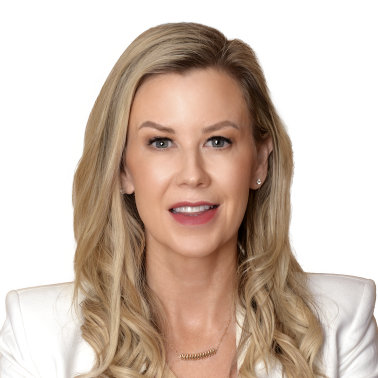The actual valuation at a VC funding round is almost always lower than what the VC puts on the term sheet - because of the “option pool shuffle.”
Learn from former VCs how to reduce this hidden dilution, and negotiate for a better valuation. Use our calculator below to estimate the impact of an option pool increase on your startup’s valuation.

What is the option pool shuffle?
The “option pool shuffle” lowers the effective valuation at a venture capital fund raise, and dilutes the founders’ ownership more than expected. The impact of option pool dilution on the terms of a VC round are often ignored or misunderstood by founders. Even well intentioned investors can push unnecessary dilution into an otherwise normal venture round – so let’s educate you on how to spot the option pool shuffle and give you tools to negotiate it to a good place!
Getting venture capital funding for your startup is an exciting moment for founders. You’re on your way, getting ready to build something amazing. But you need to be careful before you sign your term sheet, because VCs frequently add provisions that are advantageous to them, and not necessarily to you. And one provision founders need to understand is the option pool shuffle.
The option pool shuffle relates to the allocation of your startup’s shares to the VC investor, while creating or adding to an employee stock option (ESO) pool at the same time. There are two ways to allocate shares, and they’re typically referred to as the VC Friendly Approach and the Founder Friendly Approach. And as you might guess from those names, one method doesn’t favor founders. And remember to always work with an experienced startup attorney when raising venture funding – they will understand the impact on your cap table.
In this article we’ll explain how the pool dilutes founders, provide an online stock option dilution calculator, offer some negotiation tips, and also link to an Excel model you can use to negotiate with VCs.
The shuffle begins when startups set up option plans
With an employee stock option plan, startups and other employers offer their employees the option to purchase stock in the company. It’s a great benefit, and an important tool for startups to use to attract talent. To set up an ESO plan, you’ll need to allocate shares to it. And this is where the option pool shuffle takes place.
Of course, for a pre-funded company, it’s pretty easy to understand the dilution from setting up a plan. You hire your first employee, then provide some shares to them … and it’s pretty clear that you, as the founder, now don’t own 100% of the company. You’ve been diluted.
But it’s a lot more abstract at a fund raise.
VC’s want shares set aside for new hires
Frequently the VC investor will require an option pool as part of the term sheet during a funding round. That’s 100% normal. Founders will hire – that’s a big reason to raise venture funding - and setting up an option plan ahead of time makes bringing on new employees easier. (You do not want to be doing one off option legal work – that gets expensive!)
Where the valuation hit and hidden dilution happens is when the VC demands X% set aside for the pool, created PRIOR to their investment. So, essentially, the new shares set aside hit only the existing startup owners – the founders, any existing employees, and previous investors who hold shares.
And if the dilution happens prior to the investment coming in, it disproportionately impacts the founders, to the benefit of the incoming investors.
How does the option shuffle work?
With that in mind, let’s look at an example of the option pool shuffle using a hypothetical startup with 10 million shares as a starting point. Each share has a price of $1, which means you’ve got a $10 million pre-investment valuation. A VC investor wants to invest $5 million in your company in exchange for one-third ownership. You’ll add 5 million shares to your existing 10 million to provide the VC with 33% ownership.
Without an option pool, your startup’s capitalization table would look like this:
| Before VC Investment | After VC Investment | |||
| Founder | 10,000,000 | 100% | 10,000,000 | 67% |
| VC | 0 | 0% | 5,000,000 | 33% |
| Total | 10,000,000 | 100% | 15,000,000 | 100% |
| Valuation | $10,000,000 | |||
| Share Price | $1.00 | |||
We are about to introduce two ways that an option pool can be added around a venture round. It’s important to note that we almost never see the ‘founder friendly’ approach – it just doesn’t happen. However, it’s a great illustration of how dilution works, so let’s dive in:
The Founder Friendly Approach
At this point, AFTER you’ve accepted the funding, both you and the VC investor agree that you’ll need a stock option pool to help you hire top talent. You decide to allocate 10% of the final total of shares to the ESO Plan. Now your cap table looks like this:
| Before VC Investment | After VC Investment | |||
| Founder | 10,000,000 | 100% | 10,000,000 | 60% |
| VC | 0 | 0% | 5,000,000 | 30% |
| ESO Plan | 0 | 0% | 1,666,667 | 10% |
| TOTAL: | 10,000,000 | 100% | 16,666,667 | 100% |
| Valuation | $10,000,000 | |||
| Share Price | $1.00 | |||
Why are we adding 1,666,667 shares? Because the founder and VC agreed that the option pool should be 10% of the final total. In math terms, that means Founder + VC = 90% of TOTAL. If Founder + VC = 15,000,000 shares, then 15,000,000 = 90% of TOTAL. That means TOTAL = 16,666,667 shares (15,000,000/90%). So the founder has 10 million shares, the VC has 5 million, and the option pool now has 1,666,667 shares.
However, now the VC doesn’t own 33% of the company any more.The VC’s ownership stake was reduced since the option pool was created AFTER the VC provided funding and got one-third ownership of the startup.
Again, we pretty much never see the founder friendly approach. Ten times out of 10 you are going to see the VC friendly approach:
The VC Friendly Approach
For obvious reasons, VCs don’t like that method. They wanted 33%, not 30%. So they often propose the VC Friendly Approach, where the option pool is allocated BEFORE funding. Now our cap table looks like this:
| Before VC Investment | After VC Investment | |||
| Founder | 10,000,000 | 85% | 10,000,000 | 57% |
| VC | 0 | 0% | 5,789,474 | 33% |
| ESO Plan | 1,754,386 | 15% | 1,754,386 | 10% |
| TOTAL: | 11,754,386 | 100% | 17,543,860 | 100% |
| Valuation | $10,000,000 | |||
| Share Price | $0.85 | |||
How do we get here? Again, the founder and VC agree that the ESO pool should be 10% of the final total of shares, and the VC insists that they want 33% of the final total. So Founder + 10% + 33% = 100%, which means Founder = 57%. Right away you can see that the founder’s position has declined from 60% to 57%.
Let’s fill in the actual numbers. To get to our final share total, we divide our 10 million shares by the founder’s final percentage (10,000,000/57% = 17,543,860). The VC gets 33% of 17,543,860 which is 5,789,474 shares. And the ESO plan ends up with 10% of 17,543,860, which is 1,754,386. It also drops the share price from $1.00 to $0.85 ($10,000,000/11,754,386)
So now the VC does own 33% of the company, but the founder’s ownership is down to 57%. Basically, by allocating the ESO pool before the VC funding is received, the founder’s stake was diluted.
Option Pool Dilution Calculator
This calculator can roughly help you understand the impact of increasing the size of an option pool – using the VC friendly approach – during a venture fund raise. You’ll need to know the pre-money valuation, the amount raised, your existing pool size, and how large of a ESO plan you’ll need after the round closes.
What can founders do about the option pool shuffle?
Founders really have two points of negotiation: the size of the option pool and who should pay for it.
Negotiating the Option Pool Size
Does the option pool size meet your startup’s needs? Is it too big or too small? Your financial projections should help you here. You drafted a budget when you started looking for venture capital, and that budget should have your planned expenses and your timeframe. Who will you need to hire during that time frame, and how much equity will you need to offer them?
The number one way to keep the option pool manageable is to have excellent financial projections that include a hiring plan. Estimate how many options those new hires will need, and present that to the VC.
The venture capitalist may default to ‘you need a 15% option pool’ – we see pretty standard, round numbers presented in term sheets. Usually 10%, 15% or 20%.
These are just generic amounts.
Use your hiring plans to negotiate the size of the option pool. One tip that often works is to ask why the VC wants the sized pool that they are asking for. They will typically respond something along the lines of ‘to have enough shares available to provide to new employees over the next 18/24 months.”
If you have a strong hiring plan, you can use that to show them how many options you will actually need, and then negotiate down the pool to that amount.
You’ll need to spend some time researching and building out an option pool budget: Figuring out what equity percentage each of your hires will need (you can find typical ranges online), and then totaling them. If it’s lower than the option pool (10% in our example above), then you can probably bring down the size of your pool. If it’s too low, though, you risk running out of pool money and not having enough to hire the right people.
Use our free Excel model to take your hiring plan and attach the shares you’ll need for each new employee.
Paying For The Option Pool
Obviously, nobody wants to pick up the check here. Pre-investment option pools benefit the VCs, and post-investment benefits founders. Another thing you can negotiate with is your company valuation. If your VC investors insist on a pre-investment option pool, you might be able to ask for a higher company valuation. Conversely, you might be able to reduce the size of your valuation, which is basically the entry price for the VCs, and push the option pool to after the investment. A lower valuation makes your VC look like a savvy investor, so they might agree.
The impact of SAFEs and converts
Unfortunately for founders, the most common, non-priced investment vehicles – SAFEs and convertible notes – are going to end up getting their shares priced at the close of the venture round. This means that these investors (the SAFE and convert investors) also are NOT impacted by the increase in the ESO plan, so the dilution to founders is even greater.
Review the possible scenarios
It’s worth the time and effort to model various scenarios. There are software programs that make it easy to change variables and review the results of different plans. But the most important thing for founders to understand about the option pool shuffle is that it exists. If you’re aware of how the option pool funding will affect your ownership stake in your startup, you can assess your options, get information to negotiate, and make appropriate decisions. If you need more information on the option shuffle, capitalization tables, and startup funding, please contact us.











